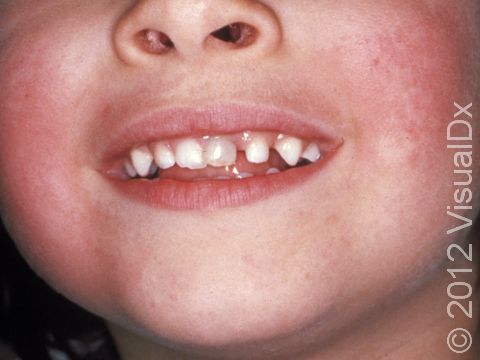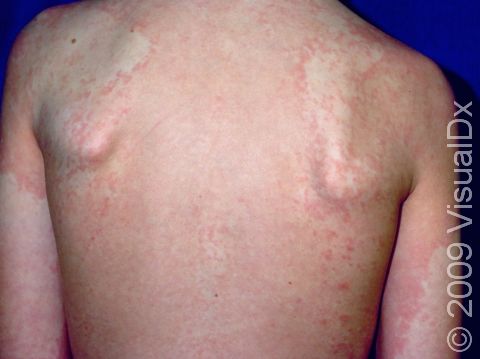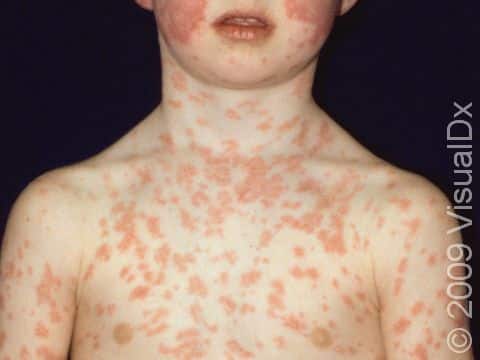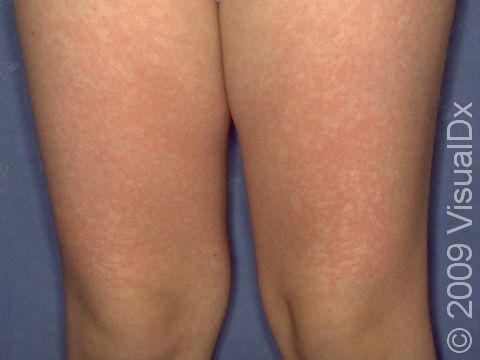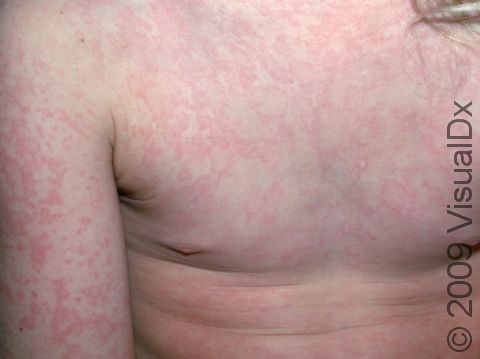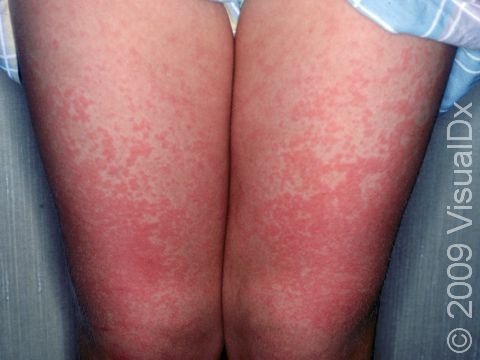Fifth Disease (Erythema Infectiosum)
Fifth disease (erythema infectiosum), also called slapped-cheek disease, is a common illness in young children due to infection with parvovirus B19. Fifth disease is spread by contact with others who are infected, specifically by exposure to fluid from the nose (respiratory secretions). The illness lasts approximately 5 days, but the rash may keep coming back for a few weeks, particularly with exercise, heat, fever, or stress. If a pregnant woman becomes infected, the infection can be harmful to the unborn baby. Fifth disease can also cause arthritis, although this is more commonly seen in infected adults.
Who's At Risk?
Fifth disease occurs all over the world. Lab studies show that about half of adults have been infected, although they may never remember being ill. The disease is common in pre-school and school-age children.
Signs & Symptoms
Bright redness of the cheeks is the classic initial sign, without affecting the areas around the mouth. About a day later, the rash shows up as a faint red, “lacy” rash on the trunk, arms, and legs. There may also be a fever or joint pain.
Self-Care Guidelines
If your child has fifth disease, it is not necessary to keep him or her away from other people because the infection is contagious before the rash appears, not after.
Notify any pregnant women who have been around your child that they have been exposed so they can notify their doctor.
You may give your child acetaminophen (Tylenol®) or ibuprofen for fever or joint pain as needed.
Treatments
There is usually no need for testing, as the disease is easily recognized.
No treatment is required, as this illness will go away on its own.
Visit Urgency
If your child has a weak immune system (from leukemia, a blood disease, or HIV/AIDS), notify the doctor if you suspect your child has fifth disease.
Trusted Links
References
Bolognia, Jean L., ed. Dermatology, pp.1260-1261. New York: Mosby, 2003.
Freedberg, Irwin M., ed. Fitzpatrick’s Dermatology in General Medicine. 6th ed. pp.2054, 2057-2058. New York: McGraw-Hill, 2003.
Last modified on October 10th, 2022 at 7:56 pm

Not sure what to look for?
Try our new Rash and Skin Condition Finder
